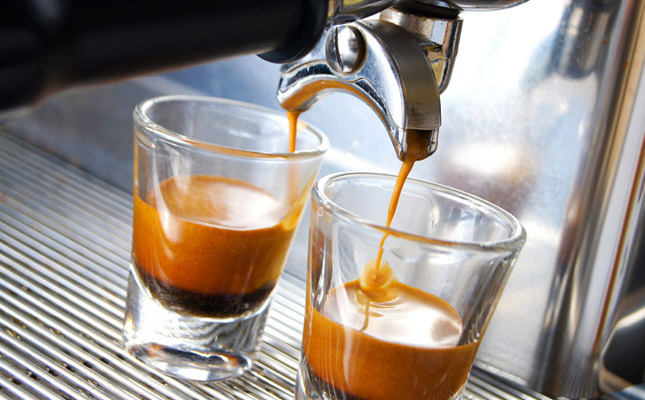[fshow photosetid=72157638499588734]
Throughout my teens and early 20s I was of the opinion that coffee was a drink for grown-ups. It was an acidic, bitter drink, brewed more for its perk-me-up effects than for its taste, and made with whatever beans were available in the supermarket. In other words, I didn’t see the point.
That was until my final year at university where, in the midst of exams and research papers, I too had to succumb to coffee’s energising properties. The alternative was coca cola, which I considered an extremely unhealthy option, or even worse, what I saw as evil concoctions like red bull that mixed excessive levels of caffeine with who knows what chemicals? Oh, and heaps of sugar too, of course.
Despite, or perhaps because of this less than gourmet introduction, my relationship with coffee has since grown and matured and I have come to appreciate all aspects of the trade, from the type and origin of the bean to its roasting profile and its preparation.
My change in attitude was inspired by a trip to one of the best countries in which to appreciate coffee culture to its fullest – Italy.
Taste of Tuscany
My week long immersion into Italian coffee culture started in Tuscany, where some true coffee enthusiasts and I had rented a private villa. The house was to be a base from which we would drive to Florence, Siena and Pisa to spend our days lazing around in piazzas, marvelling at Renaissance art and architecture, interrupted at frequent intervals by discussions about whether it was time to have another cup of coffee.
Coffee actually originates in Ethiopia and was first imported to Europe in the 16th Century by enterprising Arab traders. At the flourishing trading hub of Venice, merchants sold the exciting new product at exorbitant prices to wealthy Italians, despite opposition from the religious establishment who, due to its eastern roots, regarding the drink as an Islamic threat to Christianity.
Popular storytelling claims that it was only after Pope Clement VIII finally tried the drink and liked it that coffee’s popularity and legitimacy spread, laying the foundations for the passionate coffee culture found in Italy today.
The rules of the game
To Italians, drinking coffee is an entrenched part of piazza culture, or everyday life, if you will. Much as the greetings in parts of Asia revolve around food with common phrases like “Have you eaten yet?”, so many Italians use “Prendiamo un caffè?” as a standard greeting, which means, of course, “Fancy a coffee?”
In other parts of Europe, many people consume coffee in a rather pragmatic way, but the Italians have managed to create a culture rich in tradition and rituals that even the most casual coffee drinker is expected to observe and, ultimately, to understand.
Despite the wide variety of coffees brewed and sold in Italy, most Italians actually stick to just one or two types, the most common being espresso. It is so common, in fact, that in Italy, ordering an espresso can instantly expose you as a foreigner or outsider.
The reason for this public humiliation is because espresso is the default setting at cafes, and always a single one at that. It is simply known as un caffe and if it’s a double espresso you’re after, you order un caffe doppio. Milky variations such as cappuccino, caffe latte and macchiato are reserved for the mornings only and never taken after a meal, at which time only un caffe is acceptable.
Coffee Sense
Exotic coffee blends such as those Starbucks-initiated creations with vanilla, hazelnut, chocolate or other flavour alternating syrups would be considered nothing short of heresy in Italy. Many baristas would not even understand an order that involved such ingredients – or at least they would pretend not to. Iced coffee drinks are equally uncommon. In short, although regulated by strong traditions and rituals, coffee in Italy is generally consumed as a remedy and used as a tool.
One of the best things about drinking coffee in Italy is the fact that one can walk into pretty much any coffee shop, no matter how small or obscure, and drink an excellent tasting cup of joe. It’s well above the average cup found elsewhere in Europe and even the US, where most people’s knowledge of Italian coffee tradition stops at Illy, brewed on flashy looking, capsule operated machines.
In some places in Asia, coffee is becoming increasingly trendy as an artisanal drink for the growing middle classes, but it is still dominated by the Asian affinity for sweet and milky. Coffee beans were sold by Chinese merchants who would roast them by the roadside in large woks with spices such as tamarind or cloves to add a distinctly Oriental flavour. It is only in recent years that thousand dollar espresso machines, single-origin beans and complicated roasting profiles have emerged.
It will take many years, however, before other parts of the world experience the same innate passion for coffee that every Italian seems to harbour. It almost seems like a genetic pre-disposition. One I recommend everyone tries to emulate.
Coffee not your thing, despair not
Italy and especially Tuscany is a food lovers haven so if coffee is not your thing, despair not. The region offers plenty of other specialties that should not be missed on a trip to Italy.
- Panforte: a dense fruitcake. Siena even has its own variety, the pan pepato, a medieval predecessor with black pepper.
- Truffle: Tuscany and Umbria are famous for their truffles in both the black and white variety and restaurants from all over the world source their prized truffles from this region.
- Olive oil: Oils produced around Lucca in Tuscany and Spoleto in Umbria are known for their low acidity. The olives are handpicked to produce the highest quality oil.
- Pappadelle alla lepre: A Tuscany specialty from the area around Siena, this pasta dish derives its rich flavours from a traditional hare sauce.

